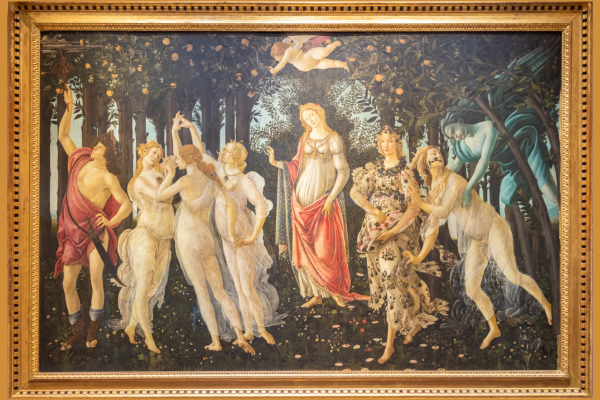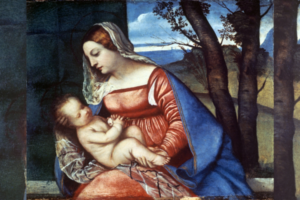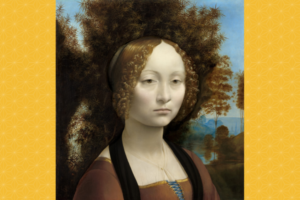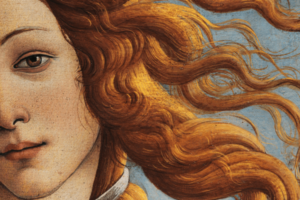The Renaissance, a term derived from the French word for “rebirth,” marked a profound period of cultural, artistic, and intellectual transformation in Europe. Stretching roughly from the 14th to the 17th century, this era signaled the transition from the Middle Ages to the Modern Age. Central to this time was a revival of interest in the ancient civilizations of Greece and Rome, a renewed dedication to learning, and a flourish of artistic and scientific innovations.
While the Renaissance spirit touched upon various disciplines—from literature to science—it was perhaps most visibly manifested in the world of art. Italian painters, in particular, embarked on a journey that would reshape the way the world perceived art. No longer just a means of representing religious devotion or narrating biblical tales, painting became an exploration of human emotion, the intricacies of the natural world, and the grandeur of the human form itself.
Italy, with its rich history and its cities teeming with ancient relics, emerged as the epicenter of this movement. Here, art was not a mere ornamentation, but a powerful medium through which ideas were exchanged, status was flaunted, and beauty was celebrated. It was in the workshops of Florence, the canals of Venice, and the chapels of Rome that artists like Leonardo, Michelangelo, and Raphael would craft masterpieces that would transcend time and redefine beauty.
This article invites you on a journey through the luminous landscape of Italian Renaissance painting, an era where brushes danced to the rhythm of newfound knowledge, and canvases became windows to human soul and intellect.
The Dawn of the Renaissance in Italy
The embers of the Renaissance were first kindled in the heart of Italy, a region steeped in a rich tapestry of art, culture, and history. As the dust of the medieval period began to settle, Italy found itself at a unique crossroad, with remnants of its glorious Roman past interwoven with the burgeoning waves of new thought, ideas, and expressions.
Origins of the Renaissance in Italy and its relation to painting:
While the origins of the Renaissance are multifaceted, a significant factor was Italy’s connection to its classical past. The ruins of ancient Rome served as constant reminders of a bygone era characterized by unmatched grandeur and intellectual prowess. This juxtaposition of ancient marvels against the backdrop of medieval stagnancy bred a sense of nostalgia and a hunger for rebirth. Scholars began revisiting texts from ancient Greece and Rome, leading to the rediscovery of classical philosophies, principles, and aesthetics.
In the realm of art, this meant a shift from the largely two-dimensional, icon-like depictions of the Middle Ages to a more realistic representation of the world. Painting, in particular, began to evolve with the incorporation of techniques that mimicked depth, shadow, and the nuances of human anatomy. This period heralded the rebirth of perspective, where art sought not just to depict, but to see and understand.
The role of patronage, particularly from the Medici family:
As with any major cultural revolution, the flourishing of arts during the Renaissance required fuel, both in the form of inspiration and material support. This support often came from patrons – wealthy individuals or families who commissioned artworks. Patronage wasn’t merely a transactional affair; it was an intricate dance of power, prestige, and passion for the arts.
At the forefront of this patronage system were the Medicis, a banking dynasty from Florence. Their influence wasn’t limited to their financial acumen; the family was intrinsically linked to the artistic soul of the Renaissance. Under their patronage, artists were not only commissioned but also nurtured, educated, and given the freedom to innovate.
Lorenzo de’ Medici, often known as Lorenzo the Magnificent, was a pivotal figure in this legacy. Under his aegis, Florence transformed into a cultural nucleus, attracting artists, thinkers, and visionaries. Names like Botticelli, Leonardo da Vinci, and Michelangelo benefitted from Medici patronage at different times, enabling them to craft masterpieces that remain unparalleled.
In essence, the convergence of a renewed interest in classical ideologies with the benefaction of visionary patrons like the Medicis created the perfect crucible for the Renaissance in Italy. This was a dawn that promised—and delivered—a day bright with artistry, innovation, and an unquenchable thirst for beauty.
Defining Characteristics of Italian Renaissance Painting
The Italian Renaissance wasn’t just an era; it was a profound artistic movement that redefined the boundaries and aspirations of painting. Beneath the brushstrokes of every masterpiece lay a complex tapestry of techniques, philosophies, and innovations that combined to bring a fresh vivacity and depth to art. Here, we explore the defining characteristics that set Italian Renaissance painting apart.
The use of perspective and proportion
One of the most groundbreaking developments of this era was the introduction and mastery of linear perspective. Artists began to harness this technique to craft images with realistic depth and dimension. The vanishing point and the horizon line became fundamental tools, allowing painters to represent three-dimensional spaces on flat canvases convincingly. Alongside, a renewed understanding of proportion, especially in depicting the human form, ensured that subjects were portrayed with anatomical accuracy and elegance.
Emphasis on humanism and depiction of the human body
The Renaissance marked a shift from the divine to the human. Humanism, a movement that placed humans at the center of the universe, greatly influenced art. Artists began to celebrate the human form, exploring its beauty, strength, and vulnerability. Works such as Michelangelo’s “David” or Leonardo’s “Vitruvian Man” epitomize this fascination, presenting the human body not just as a subject but as a symbol of harmony, potential, and knowledge.
Transition from religious to secular subjects
While religious themes remained prominent, the Renaissance saw an increasing interest in secular subjects. Portraits, scenes from daily life, mythological narratives, and landscapes gained popularity. This diversification reflected the broader societal shifts and the growing prominence of merchant classes, who became influential patrons of the arts. Paintings began to capture slices of life, from the grandeur of courtly love to the serenity of pastoral scenes.
The use of chiaroscuro (light and shadow) and sfumato (soft transitions)
The Renaissance painters’ palettes weren’t just made of colors; they were also composed of light and shadow. Chiaroscuro became a vital technique, enabling artists to impart volume, depth, and drama to their subjects. By juxtaposing light and dark elements, artists could model their subjects more realistically, imbuing them with a lifelike quality.
Hand in hand with chiaroscuro was the technique of sfumato. Pioneered by artists like Leonardo da Vinci, sfumato involves the delicate blending of tones and colors without the use of stark lines or borders. This resulted in soft transitions, lending subjects an ethereal, dreamlike quality, best exemplified by the enigmatic smile of the “Mona Lisa”.
In sum, Italian Renaissance painting wasn’t merely a visual treat; it was a cerebral one. It beckoned viewers to not just look, but to observe, to question, and to marvel. Through innovative techniques and fresh perspectives, it bridged the earthly and the divine, capturing the multifaceted tapestry of human existence in strokes of genius.
Influence on Later Artists and Movements
The brilliance of the Italian Renaissance did not merely fade away as the years progressed; instead, its luminescence acted as a guiding light for subsequent art movements and artists. The techniques refined, the philosophies birthed, and the masterpieces created during this period became the foundation upon which newer forms of expression were built. Here, we traverse the bridge between the Renaissance and the subsequent artistic epochs it inspired.
The bridge to the Baroque era
Emerging in the late 16th century, the Baroque movement can be seen as both an extension and a reaction to the Renaissance. While it embraced the humanistic values and technical precision, Baroque art introduced more dynamism, drama, and emotional intensity. The controlled balance of Renaissance art gave way to exuberant displays of light, motion, and sensuality. Artists like Caravaggio, with his dramatic use of light and shadow, or Bernini, with his fluid sculptures, showcased the evolution from the restrained elegance of the Renaissance to the passionate vigor of the Baroque.
Inspiration for neoclassical and romantic artists
The ripples of the Renaissance reached the shores of the Neoclassical and Romantic movements of the 18th and 19th centuries. Neoclassical artists, yearning for the order, simplicity, and harmony of classical art, looked to the Renaissance as a model of the revival of Greco-Roman ideals. This is evident in the works of artists like Jacques-Louis David, whose paintings echo the composed grace of Renaissance portraits.
The Romantic movement, on the other hand, embraced the individualistic spirit and emotional depth that began with the Renaissance but chose to magnify them. Romantic artists like Delacroix or Turner were deeply influenced by the Renaissance’s emphasis on human emotion but displayed it with heightened drama and passion.
Lasting impressions on modern and contemporary art
While modern and contemporary art movements, such as Cubism, Surrealism, or Abstract Expressionism, may seem worlds apart from the Renaissance in their expressions, the foundational values of individualism, innovation, and a break from convention can be traced back to the Renaissance masters. Leonardo, Raphael, and Michelangelo were, in many ways, the first modern artists, challenging the status quo and constantly pushing the boundaries of what art could achieve.
Moreover, contemporary artists, even today, revisit Renaissance techniques, themes, and subjects, either as a homage or as a means of reinterpretation. Whether it’s in the study of human anatomy, the play of light and shadow, or the exploration of perspective, the touch of the Renaissance remains ever-present, reminding us of an era where art and human potential reached unprecedented heights.
In essence, the Italian Renaissance did not just leave behind masterpieces for us to admire; it charted the course for the unending journey of artistic evolution, casting a long, influential shadow that artists of every era have sought to stand in, learn from, and transcend.
The Legacy of Italian Renaissance Painting
The sun may have set on the Renaissance, but its golden hues continue to illuminate the corridors of time, casting an indelible glow that touches every corner of our world. The legacy of Italian Renaissance painting is vast and multifaceted, having left an imprint not only on subsequent art movements but also on global culture, education, and our very perception of humanity and civilization. Let’s delve into this enduring inheritance.
The worldwide influence on art, culture, and education
Italian Renaissance painting acted as a catalyst for an artistic domino effect, inspiring a cascade of movements across Europe, from the Northern Renaissance in regions like Flanders to the ornate aesthetics of the Spanish Renaissance. The techniques, subject matters, and philosophies rooted in the Renaissance became foundational teachings in art institutions globally, setting a standard for artistic excellence.
Beyond art, the ethos of the Renaissance seeped into culture and education. The era’s emphasis on humanism and the potential of the individual became integral to educational curriculums worldwide. The spirit of inquiry, observation, and exploration heralded by Renaissance artists parallels the scientific and literary endeavors of the time, underpinning the modern holistic approach to education.
The preservation of these masterpieces and their places in museums today
Centuries later, the masterpieces of the Renaissance are not just revered; they are treasured. Museums, from the Uffizi Gallery in Florence to the Louvre in Paris, dedicate vast spaces to showcase these works, drawing millions of visitors annually. Each painting, fresco, or sketch is meticulously preserved, often using cutting-edge technology, ensuring that future generations can experience their magic.
These artworks are not merely remnants of the past; they act as ambassadors, bridging historical epochs, fostering international dialogues, and fueling cultural exchange. They’ve become symbols of global heritage, transcending boundaries and resonating universally with diverse audiences.
Their value in understanding human history, creativity, and civilization
Italian Renaissance paintings serve as windows into a bygone era, offering insights into the societal norms, values, and aspirations of the time. But beyond their historical significance, they stand as testaments to the boundless capabilities of human creativity. In every brushstroke, shade, and contour lies the artist’s quest to grasp the intangible, to give form to emotion, and to reflect the essence of existence.
Furthermore, these artworks underscore the interplay between art and civilization. They highlight how art can both shape and be shaped by societal evolutions, acting as both mirrors reflecting societal truths and compasses pointing toward new horizons.
In conclusion, the legacy of Italian Renaissance painting is not one that is trapped within gilded frames. It lives on in the way we perceive the world, how we value creativity, and in our ceaseless quest for knowledge and beauty. It’s a legacy that underscores the profound impact of a singular artistic epoch on the unending tapestry of human history.
Conclusion
The Italian Renaissance, with its burst of creativity, innovation, and unparalleled mastery, remains one of the most influential periods in art history. The masters of this era – from Leonardo da Vinci’s introspective portraits to Michelangelo’s grand frescoes – have left an indomitable mark, not only on the canvas of art but on the very fabric of human civilization.
The magic of the Renaissance lies not just in the masterpieces themselves but in the stories they tell and the emotions they evoke. These artworks serve as powerful narratives, intertwining tales of ambition, passion, and the relentless pursuit of perfection. They paint a picture of an era where artists dared to dream, to challenge, and to redefine the boundaries of creativity.
For those of us living in this modern age, these paintings offer more than historical insights; they extend an invitation. An invitation to step back from our digital-driven lives and immerse ourselves in the tangible beauty of art. The delicate play of light and shadow in a Caravaggio, or the serene gaze of Raphael’s Madonnas, beckon us to pause, reflect, and connect with a world where every brushstroke speaks of dedication and vision.
To truly grasp the magnitude and brilliance of the Italian Renaissance, one must move beyond images on screens or pages in textbooks. It is a heartfelt encouragement for every reader to embark on a personal journey, to stand in front of these masterpieces, and to let the colors, forms, and emotions envelop you. There’s a profound difference between seeing and experiencing; the former is passive, while the latter is transformative.
In the echoes of the Renaissance, we find a reminder of the timeless nature of art, its ability to transcend eras, inspire generations, and resonate with the core of our shared humanity. As we step into a future teeming with endless possibilities, let us carry forward the spirit of the Renaissance masters, cherishing their legacy and ensuring that their flame of creativity continues to illuminate our world.



